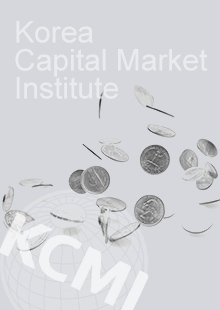Find out more about our latest publications

[06-06] Corporate Cash Holding and Corporate Value
Research Papers 06-06 Dec. 06, 2006
- Research Topic Corporate Finance
- Page 69
- No other publications.
In recent years, it is our observation that Korean firms have actually been increasing their cash and cash equivalents, as well as marketable securities. Non-financial companies, which are listed on the KRX and settle their accounts in December, reported a total of 29 trillion won in cash and cash equivalents, and 22 trillion won in short-term financial instruments as of the end of fiscal year 2005. These are significant jumps from the 11 trillion won and 12 trillion won, respectively, reported at the end of fiscal year 2000.
Actually, there have been debates on corporate finance policies, corporate payout policies, and corporate investment policies of Korean firms. Some argue that these firms tend to increase dividend payouts and decrease cash reserves, reducing their investments for future growth. Others claim that the firms are accumulating excessive cash without clear reasons. With this dispute in mind, this research investigates corporate cash holding.
We research the determinants of the cash holding propensity for non-financial companies and the effects this excessive cash holding has on their performance; the effects are studied in two groups, divided into those occurring when the firms are constrained financially and when they are not, considering the results of Almeida et al. (2004).
For these analyses, we use the data of the non-financial firms, which are listed on the KRX and settle their accounts in December, available over the last seven years. In particular, we postulate two main equations using two-way random effect error component models. The first equation, what we call the cash equation, explains the determinants of corporate cash holding, which is not excessive. The second equation, the performance equation, accounts for the effects of excessive cash holding on corporate value.
The results are as follows: Such variables as Tobin's Q, net working capital, uncertainty of cash flow, and leverage agree with previous empirical works in their signs and statistical significance in the cash equation; firm size turns out to be not statistically significant. The dummy variables of large company groups turned out to be significantly negative. The number of shareholders, which implies diversification of ownership, is meaningless in explaining the inclination of cash holding. The total amount of settlement of commercial notes shows a significant negative sign, suggesting that the payment practice itself is a possible factor affecting the propensity of cash holding.
In summary, the firms show a tendency to hold more cash and marketable securities as they have more investment opportunities, larger cash flow, higher uncertainty of the cash flow, higher risk, and smaller inventories; firms that have less net working capital, less capital expenditure, less borrowing ability, and less settlement of commercial notes also show these tendencies.
Before estimating the performance equation, we study the cash flow sensitivity of cash holding of firms. Both the firms that could pay out dividend and were in the top class in terms of market value (financially unconstrained firms) and the firms that could not pay out dividends and were in the bottom class in terms of market value (financially constrained firms) accumulate cash from cash inflow, contrasting with U.S. firms in the previous literature, Almeida et al. (2004). It is understandable that the constrained firms possibly accumulate cash because they have difficulty borrowing from outside; however the hoarding of cash from cash flow of unconstrained firms may cause the agency cost of free cash flow.
According to the performance equation, the excessive cash holdings of financially constrained firms do not significantly affect the values of those firms. On the contrary, the excessive cash holdings of unconstrained firms clearly have negative influences on their value. Reflecting the result of the cash flow sensitivity analysis, we conclude that cash accumulation by fina